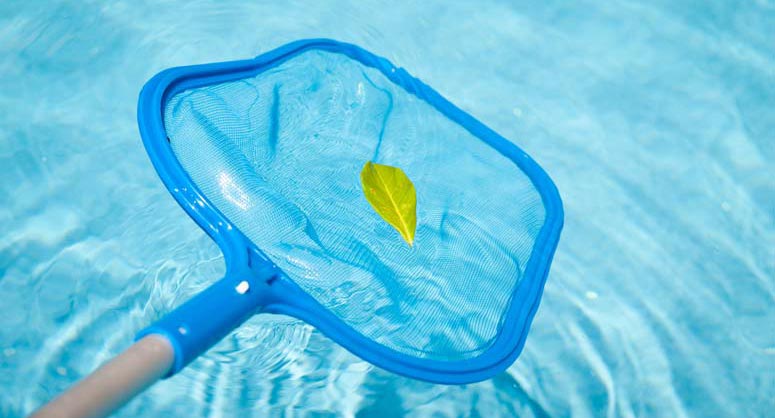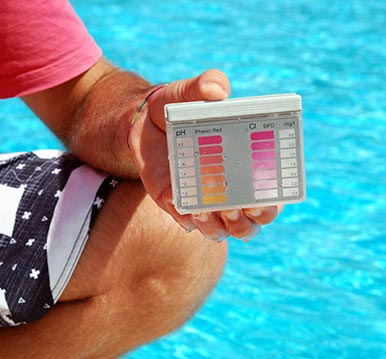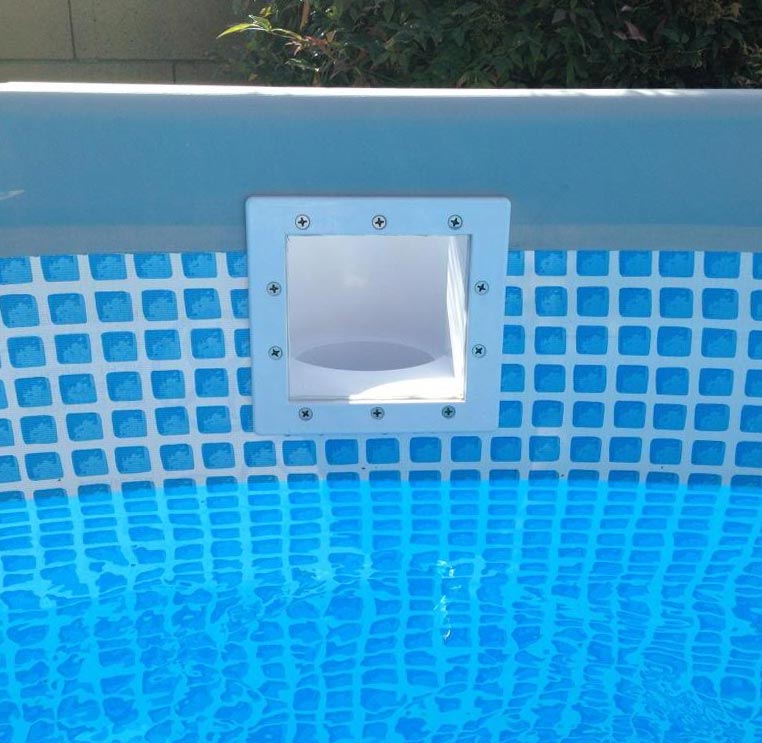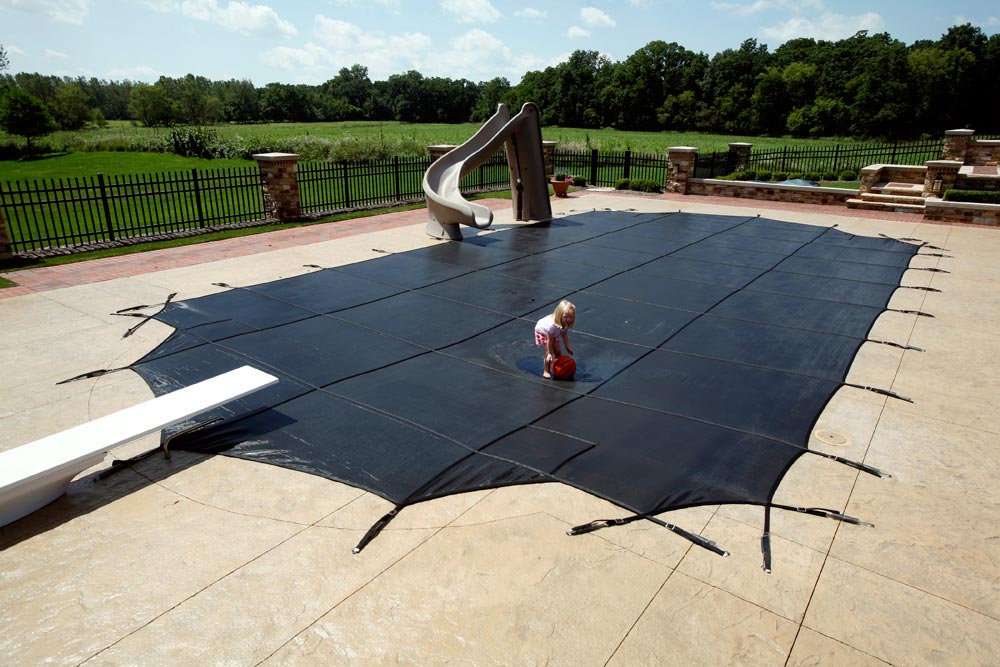You were enjoying a good swim in the summers, splashing around in your bathing suit, but the next day, you’re looking at chilled days and sudden temperature drops. Learning how to winterize a swimming pool correctly might be your only chance to keep your pool perfectly operational for the next season.
Sure, it’s a bummer when nobody’s up for some extra chores, but there are plenty of benefits to pool winterization, but only if it’s done in the right manner can you keep your pool extra clean and enjoy peace of mind.
You’ll be surprised to know most professional pool companies charge $200 to $400 to winterize a pool. Who doesn’t want to save that amount? If done yourself, you can get it done in a matter of hours, but only if you know how to winterize an above ground pool.
 |
|
1. Clean Out the Pool
Let’s kick things off with the most essential step — say goodbye to the leaves, insects, dirt, and any other debris that has made itself comfortable in your oasis.
Grab a pool vacuum for a meticulous job, or opt for the old-fashioned net method — whichever suits your style.
And hey, don’t overlook the skimmer and pump basket; they deserve some attention too. Want to add a finishing touch? Ensure the tile line is spick and span. Our go-to recommendation is a top-notch tile & vinyl cleaner or any equivalent product for a well-done job. |
 |
|
2. Balance the Water Chemistry
Maintaining the right balance in your pool’s water chemistry is key to warding off algae, corrosion, and scale buildup. Learn more about balancing your pool's water.
Approximately three to seven days prior to closing your pool, make the following adjustments:
- Firstly, it’s important to tweak your alkalinity level within 80 - 120 ppm (Parts Per Million.) This sets the stage for a healthy pool environment and guards against potential issues down the line.
- Next up, is the shock treatment. Employ either chlorine or a non-chlorine level to a robust 10 - 12 ppm. This proactive step ensures a sanitary swimming space when you next dive in.
- Now, a bit of patience pays off. Allow the pool chlorine to gradually return to its normal range, hovering between 1.5 - 3.5 ppm. This paves the way for the subsequent addition of pool algaecides or pool winterizing chemicals. Including winterizing chemicals in your water will help keep it blue and clear for the next season.
|
It’s worth noting, though, that you should always adhere to the manufacturer’s instructions. For those with larger pools, additional quantities of certain chemicals might be recommended to ensure optimal pool winterizing.
Steer clear of floaters containing potent oxidizers like chlorine or bromine, as they can adhere to the wall, potentially causing staining or bleaching, especially in vinyl-lined pools.
A word of caution — resist the temptation to toss chlorine or bromine tablets directly into the pool. These tablets are heavy and tend to sink, posing a threat to your pool’s surface. To dive into the nuances of pool-closing chemicals, head over to an insightful article on
pool-closing chemicals.
By fine-tuning these chemical nuances, you’re not just pool winterizing; you’re laying the groundwork for a trouble-free and sparkling reopening come the next swim season.
3. Remove Everything Pool Related
Give your pool equipment a good rinse and lay it out under the sun to let them air dry. Now, where to stow everything for the winter? Your garage, shed, or any dry hideaway will do the trick.
4. Clean and Backwash the Filter
Now comes a crucial step in preparing your swimming pool for winter — cleaning and backwashing the filter. Let’s dive into the details to ensure your pool is winter-ready. For more in-depth guidance, check out our comprehensive article on
cleaning your pool filter.
After giving your pool a final brush and vacuum, shift your focus to the filter. It’s essential to clean it thoroughly, ensuring it’s free from any debris or contaminants.
If your pool uses DE (Diatomaceous Earth) filters, drain the tanks and leave the backwash valve open. Be careful not to engage in “acid wash” during pool closing; save this for spring when you’re opening the pool. Running pool water through the system immediately after an acid wash is advisable to prevent any degradation of filter parts during winter.
It’s important to note that using muriatic acid on a DE filter and then simply rinsing it off for storage is not recommended. This practice may lead to the degradation of filter parts over the winter season.
For sand filters, unplug the filter drain plug and leave it off. Include the drain plug with other removed items in the pump basket. Ensure the multiport valve is devoid of water, and if necessary, use a
winterizing blower to blow it out.
Keep in mind that the detailed cleaning and backwashing described here are specific to DE and sand filters. If your pool utilizes cartridge filters, you can skip this step, as it’s not necessary for their maintenance during pool winterization.
|
5. Lower the Water Level
Closing your pool for the winter is a task that might not spark excitement, but it’s a crucial step to shield your pool from potential freeze damage.
Freezing temperatures pose a risk even for those in sunbelt states, so taking precautions is essential.
Winterizing your pool even in warmer regions, freezing temperatures can catch you off guard. Leaving your pool empty isn’t the solution, as the soil underneath can expand when water freezes, potentially lifting the pool out of the ground. To avoid this, maintain some water weight to anchor the pool securely.
How to Lower the Water Lever?
- Using your filter pump or submersible pump.
- Begin the process by draining the water below the skimmer’s mouth.
- Remember, never leave the pool entirely empty.
- Determining the Right Water Level
- If you’re using a mesh cover, lower the water 12 to 18 inches below the skimmer.
- For a solid, floating cover, bring the water level to 3 to 6 inches below the skimmer.
- Lower the level about 4 to 6 inches below the lowest plumbing line, typically till the water return line.
- Ensuring Adequate Water Level
- Confirm the water level is below the skimmer, providing the necessary weight to keep the pool in place.
Above Ground Pools: Special Considerations
If you're a proud owner of an above ground pool, the winterization process shares similarities but requires specific attention. Here's how to winterize an above ground pool effectively:
- Drain the Pool
- Ensure thorough drainage or use a pool winterizing blower to remove water from pumps, filters, heaters, and chlorinators.
- Clean DE filter grids or cartridge filters meticulously. .
- Store small equipment indoors, and keep plugs in the skimmer basket for easy access in spring.
- Covering Your Above Ground Pool
- Choose a winter cover that fits tightly and lacks holes or gaps.
- For optimal protection, consider mesh safety covers for inground pools.
- Mesh and solid covers are suitable for above ground pools but don't provide the same safety level.
|
|
 |
6. Drain the Equipment
Why is Draining Equipment Crucial?
Freezing water within your pool's pump, filter, heater, or chlorinator can spell disaster. The expansion that occurs as water turns to ice may lead to cracks, compromising the integrity of these essential components. To sidestep this hazard, ensuring that every drop of water is drained or blown out is crucial.
Draining Procedures for Pool Equipment
- Locate Drain Plugs: Every piece of equipment has drain plugs placed to facilitate water drainage. Identify these plugs as your starting point.
- Comprehensive Water Removal: Drain or blow out all water residing within the pump, filter, heater, and chlorinator.
- Filter Care: For DE filter grids or cartridge filters, the extra step of removal is necessary. Once extracted, give them a thorough cleaning to remove any lingering debris.
- Storage Considerations: If your filter and pump are compact enough, consider storing them indoors. This shields them from the harsh winter elements. For larger equipment, a pool winterizing blower becomes your ally, removing any residual water.
- Plug Placement Strategy: Keep track of all drain plugs during this process. Place them securely in the skimmer basket, creating a central location for easy retrieval come springtime.
Pro Tip: Pool Winterizing Blower
For larger equipment that may not fit snugly indoors, a pool winterizing blower is a valuable tool. This handy device ensures that every nook and cranny is free from water, minimizing the risk of damage during the winter hiatus.
By implementing these steps diligently, you're draining the potential for winter-related equipment woes.
7. Cover the Pool
When it comes to winterizing your pool, the final touch is covering it up. Unlike the lighter summer covers, these are robust enough to handle the weight of snow and ice. Beyond preventing debris from entering, they act as a safety barrier, avoiding any accidental falls.
Choosing the Right Cover
Avoid covers with holes or gaps that may let leaves and debris into the water. For
inground pool covers, mesh safety covers provide top-notch protection and safety.
If you have an
above ground pool, both mesh and solid winter covers will shield your pool, though they don’t offer the same safety features as their inground counterparts.
To dive deeper into the world of pool covers and make an informed choice, check out our guide on
choosing a pool cover.
Ensuring a Smooth Winter and Spring Transition
By following the steps outlined in our guide on how to winterize a pool, you're setting the stage for a trouble-free winter and a seamless reopening come spring.
If you ever find yourself unsure about the process or have specific questions about closing your swimming pool, we're just a call away at (888) 836-6025. Our team of experts is here to provide personalized guidance and ensure your pool is winter-ready.
Pool winterizing may seem like a chore, but with the right steps, it becomes a proactive measure to avoid problems and costly repairs. Trust our expertise to make your pool closure a breeze, so you can eagerly anticipate a smooth reopening when the warmer months roll around again.



